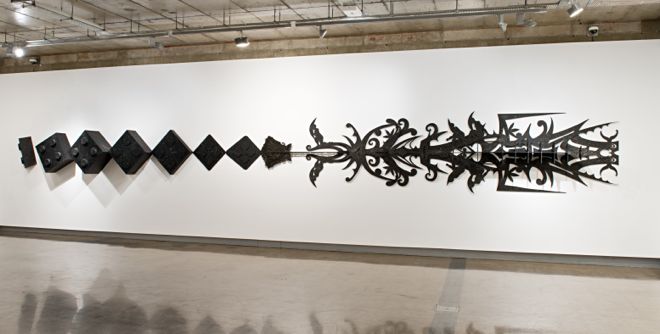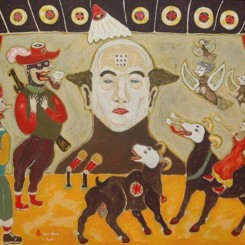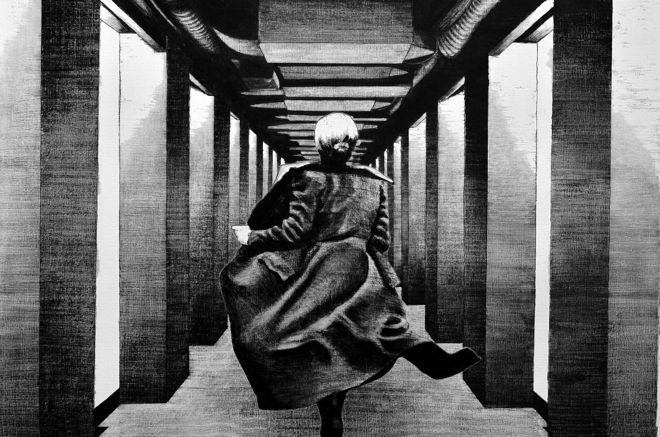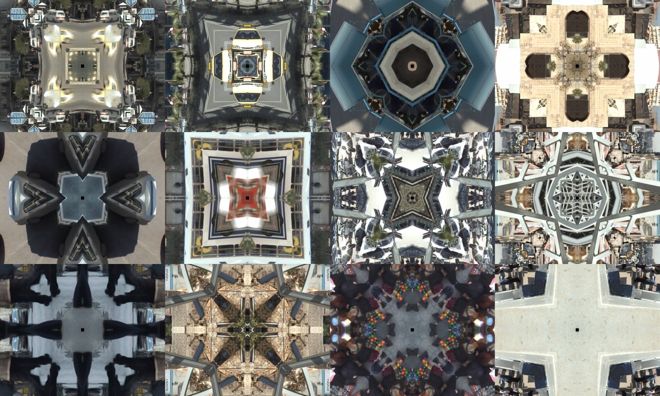With the slogan “We Are Asia,” Art Stage Singapore returns next week for its fourth annual edition. This fair rides the tide of government-backed development of an art scene on the island; to date, this includes a Biennale (this year is the fourth), a funded gallery enclave at the former Gillman Barracks and, most recently, branches of international galleries (including Arndt and Lisson from Europe). Indeed, Singapore will return to the Venice Biennale in 2015 after a strange misstep to sit out in 2013. Within Southeast Asia, Singapore occupies an at once complicated and powerful position: the region is a hotspot for Asian contemporary art—promising for the market, but with fragmented cultural identity and structure. Among the charms of Singapore for an art fair are its international character and business frameworks, efficient organization and proximity to a strong collector base (in Singapore as well as elsewhere, particularly Indonesia), as well as emerging and established artists in the region.
On his renewed ambitions for Art Stage, the founding director Lorenzo Rudolf (formerly the director of Art Basel) highlights the need to create a distinctive brand—“Your own very specific identity and uniqueness,” Considering the mushrooming of activity and interest in contemporary art in Asia, including the clout of Art Basel Hong Kong, Rudolf nonetheless points to the nascent internationalism of the region. “At the moment, there are two places in Asia with international interaction—Hong Kong and Singapore. I see this as a complementary relationship…We need professional, international art fairs as catalysts for each other and for the market in general.”

Brian Robinson, “XXIII VIII MCM LXXIII, when worlds collide”, 2013. Presented by Mosseson Galleries.
The emphasis for Art Stage is not, then, on competition, but on cultivation. With this development in mind, the fair has this year ensured that every platform is supported by a gallery. This is particularly pertinent given that in 2013, the fair itself made sales of art works by taking collectors on private visits to artist studios abroad. Rudolf attributes this controversial action to the unwillingness, for example, by Indonesian galleries (which are part of a strong but closed local market), to invest in artists’ presentation at the fair. Now, however, Rudolf says, “They have realized the reality!”
One priority in 2014 is content. Expect a new fair format and museum-style layout aiming to offer much more in terms of curatorial guidance. Eight country and regional “Platforms” will include art from Southeast Asia, India, China, Taiwan, Japan, Korea, Australia and Central Asia, as chosen by the respective curators. These museum-like “sales exhibitions” aim to reconnect the market with local, non-commercial academia. The Southeast Asia Platform will be the largest, organized in collaboration with six country advisers. Visitors will see newly commissioned projects from Singapore, Malaysia, Indonesia, Cambodia, Laos, Myanmar, Philippines and Thailand. Supporting galleries for this section include FOST, Richard Koh Fine Art and The Drawing Room (all based in Singapore). A China Platform will be curated by Huang Du and present works by Zhang Xuerui and Liao Fei; the Japan Platform, curated by Mami Kataoka, the Chief Curator at the Mori Museum, will present works by Nobuhiro Nakanishi.
The exhibitor line-up for 2014 shows reasonable consistency with the previous year. More than 158 galleries will be present in some form, 75% of which are Asia-Pacific based. This year sees an increase in those based or with a branch in Singapore (36 as opposed to the 2013 total of 24). White Cube, a blue-chip international player, will attend again this year, and Ben Brown Fine Arts will be back after skipping the 2013 edition. Important new international names for 2014 are Lisson and Arndt, both of which recently established Singapore branches—along with Pearl Lam Fine Arts (from Shanghai & Hong Kong), due to open its Singapore branch in January. Gone from the line-up are Haunch of Venison (London, New York), Eigen + Art (Berlin, Leipzig), Timothy Taylor (London) and Halcyon (London, Shanghai).
Talks at Art Stage this year will be wide-ranging. “Ink Identity,” with Gu Wenda, Tiffany Beres and Uli Sigg is topical given the current buzz around this medium; “Alternative Ways of Resolving Legal Disputes Over Western and Asian Art,” will be given by David Liatowitsch, and Isabelle & Jean-Conrad Lemaitre will speak “On Collecting Video Art.”
Beyond the fair are a multitude of satellite events under the banner of Singapore Art Week. For “An Evening at Gillman Barracks” on the 17th, sixteen galleries will be open late. Among them, Arndt will be showing wooden sculptures by Stephan Balkenhol, and the inaugural show at the new Pearl Lam space will feature Asian abstract artists including Zhu Jinshi and Christine Ay Tjoe. Also at Gillman, don’t miss the inaugural exhibition at the Centre for Contemporary Art (CCA). The recently-established centre (developed by Nanyang Technological University with the support of Singapore’s Economic Development Board), is headed by Ute Meta Bauer, a curator and formerly Associate Professor for Visual Art at MIT’s School of Architecture and Planning and a Dean at London’s Royal College of Art. The exhibition “Paradise Lost” (co-curated by Bauer and Anca Rujoiu) will open on January 17th and feature work by Trinh T. Minh-ha, Zarina Bhimji and Fiona Tan around themes of travel, place and history. Also new for 2014, the Prudential Eye Award has shortlisted twenty works across five categories: painting, photography, sculpture, installation and digital/video work. The winners will be announced on January 18, and their work exhibited at the Saatchi Gallery in London this summer. Auctions will be held at Larasati Auctioneers, Borobudur Auction, 33 Auction and Est Ouest Auction between January 17 and 19, offering lots including South-East Asian and Japanese art. At the more modestly priced end of the scale, the Art Apart hotel fair returns this year. Alongside free tours organized by Art Stage of its Platforms exhibitions, the Art Galleries Association of Singapore (AGAS) is offering free bus trips to take in thirteen galleries including Art Plural and the Singapore Tyler Print Institute. Singapore Biennale exhibitions under the theme “If the World Changed” continue at Singapore Art Museum (SAM) and The National Museum.
In sum, the week spearheaded by Art Stage Singapore promises again to be full and active. The organizers aim to give visitors different options for engagement with contemporary art in a region that is both exciting and very challenging; a balance of identity and integration will be key. For the man behind the fair, “Art Stage Singapore is part of an Asian reality; but it’s also a fair which develops an Asian reality.”




